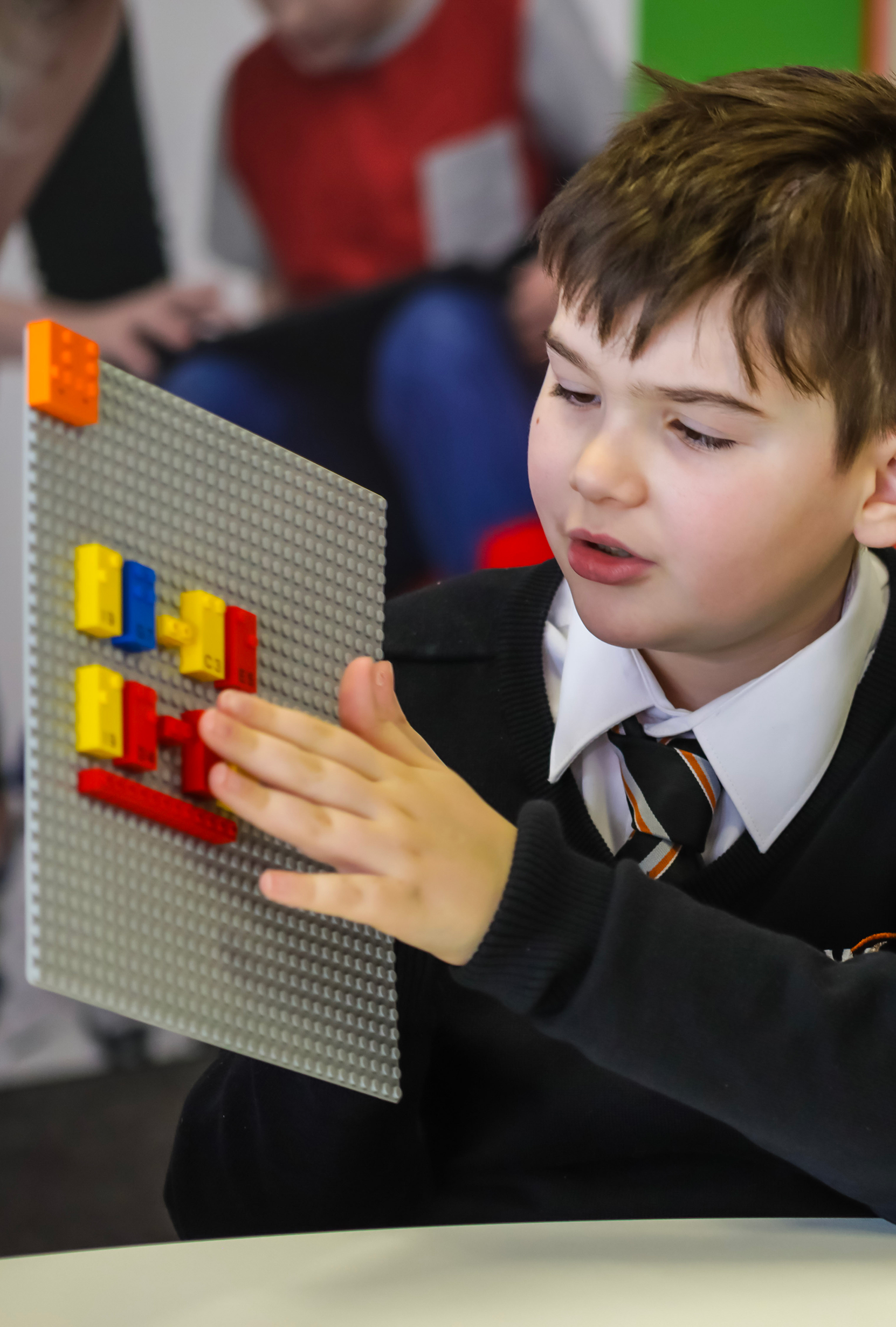Words by: Kris Scott
LEGOS have been around since 1949. At 70 years old, some manufacturing companies would be resting on their laurels, enjoying the accomplishment that seven decades of continued popularity provides. Not LEGO.
Time and again, the company has proved that design innovation and reinvention are as much the tools of its trade as its classic toy bricks. From the 1964 debut of its first Lego “sets” with instruction manuals and the 1969 introduction of the Duplo system, to its 21st century LEGO Architecture offshoot and premiere of two major motion pictures, LEGO keeps upping its game.
Not surprisingly, it’s not done yet. And this latest design innovation is setting a new tone — one that will help a generation of blind or visually impaired children learn Braille in an engaging and play-focused way. Developed by the LEGO Foundation in conjunction with the LEGO Group, the company’s Braille Bricks were unveiled in Paris in April.




The concept was seeded eight years ago when the Danish Association of the Blind approached LEGO with the idea, and bloomed after the Brazil-based Dorina Nowill Foundation for the Blind also urged the company to consider making products for the visually impaired. The prototypes are now being tested in Denmark, Brazil, the UK and Norway.
“It’s the right product for the right time,” says Philippe Chazal, Treasurer of the European Blind Union. “With thousands of audiobooks and computer programs now available, fewer kids are learning to read Braille,” Chazal says. “This is particularly critical when we know that Braille users often are more independent, have a higher level of education and better employment opportunities. We strongly believe LEGO Braille Bricks can help boost the level of interest in learning Braille, so we’re thrilled that the LEGO Foundation is making it possible to further this concept and bring it to children around the world.”
LEGO Braille Bricks are molded with the same number of studs used for individual Braille alphabet letters and numbers and are fully compatible with ordinary LEGO bricks. They also featured printed characters to ensure that families, friends and teachers of blind and visually impaired users can interact and use the products on equal terms.
One of the LEGO Group’s senior art directors, Morten Bonde, worked as an internal consultant on the project. Bonde has a genetic eye disorder that is gradually turning him blind. “Experiencing reactions from both students and teachers to LEGO Braille Bricks has been hugely inspirational and reminded me that the only limitations I will meet in life are those I create in my mind,” Bonde says. “The children’s level of engagement and their interest in being independent and included on equal terms in society is so evident. I am moved to see the impact this product has on developing blind and visually impaired children’s academic confidence and curiosity already in its infant days.”
LEGO Braille Bricks will be tested in more countries later this year, and is expected to formally launch in 2020. Sets will include around 250 bricks covering the full alphabet, numbers 0-9, select math symbols and inspiration for teaching and interactive games.
“At the LEGO Foundation, we believe children learn best through play and in turn develop the breadth of skills, such as creativity, collaboration and communication, that they need in the post 4th Industrial Revolution,” says LEGO Foundation CEO John Goodwin. “I hope children, parents, caregivers, teachers and practitioners worldwide will be as excited as we are, and we can’t wait to see the positive impact.”